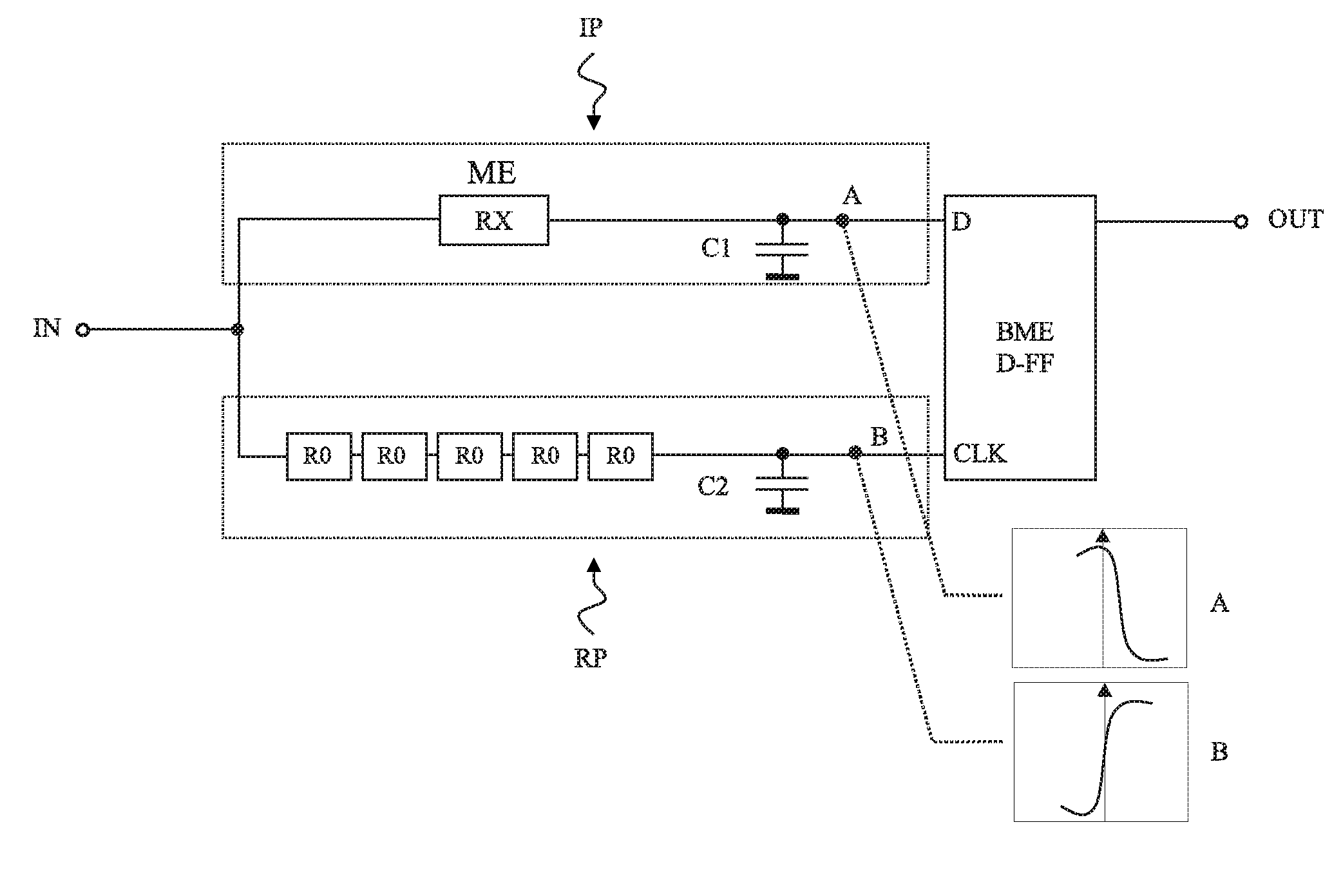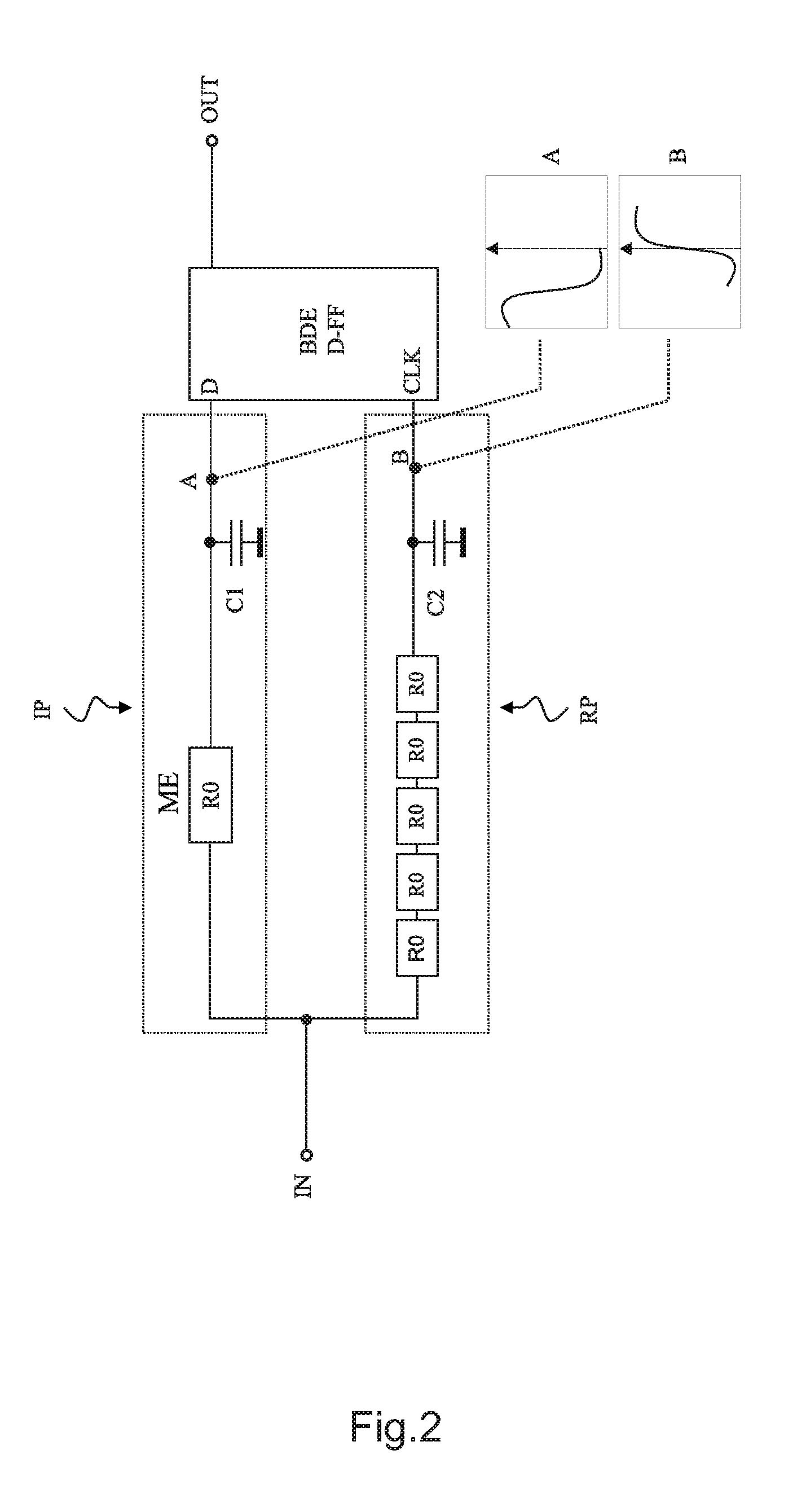Read enhancement for memory
- Summary
- Abstract
- Description
- Claims
- Application Information
AI Technical Summary
Benefits of technology
Problems solved by technology
Method used
Image
Examples
Embodiment Construction
[0039]FIG. 1 shows a simplified basic arrangement according to an embodiment of the present invention. The information path IP includes the memory element ME. The reference path RP includes a reference element REF. However, the reference path RP does not need to provide a reference element REF as long as the electrical properties of the reference path RP are known, and as long as those properties are suitable for the invention. According to the embodiment shown in FIG. 1, a reference element REF is coupled to the reference path. This reference element is designed in relation to the electrical properties of the memory element ME. If for example, the memory element ME is a polysilicon fuse, having a first resistance in a unwritten state and a second resistance in written state, the reference element can be designed to provide a resistance that is approximately in the middle of these values. The memory element can also be one of the above mentioned elements, as MRAM, FRAM, PMC, or an E...
PUM
 Login to View More
Login to View More Abstract
Description
Claims
Application Information
 Login to View More
Login to View More - R&D
- Intellectual Property
- Life Sciences
- Materials
- Tech Scout
- Unparalleled Data Quality
- Higher Quality Content
- 60% Fewer Hallucinations
Browse by: Latest US Patents, China's latest patents, Technical Efficacy Thesaurus, Application Domain, Technology Topic, Popular Technical Reports.
© 2025 PatSnap. All rights reserved.Legal|Privacy policy|Modern Slavery Act Transparency Statement|Sitemap|About US| Contact US: help@patsnap.com



